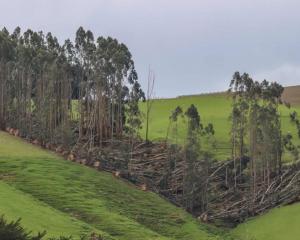A new doctor arrived in Lawrence last week, ending an eight-month period during which the township and surrounding area had been without a permanent medic. Yet, as Shane Gilchrist discovers, the Tuapeka once presented more than a few headaches for its rural practitioners.
Dr Ruth Alberts started work as the only doctor at the Lawrence Rural Health Centre last week, having moved south with her family after working as a GP on the Hibiscus Coast, north of Auckland, for 14 years.
According to an earlier Otago Daily Times article, Dr Alberts enjoys the outdoors, tramping and the rural lifestyle, her interests perhaps not dissimilar to some of those who practised medicine in the area long before her arrival.
Amid the fine print of a 1922 publication that delves deep into the lives and times of early medics of the South, there are tales of those who toiled in the Tuapeka district that are bound to raise the pulse.
The book, by Robert Valpy Fulton, Medical Practice in Otago and Southland in the Early Days, encapsulates a series of articles he had written for The Otago Witness, ostensibly dealing with the life histories of pioneering medical practitioners.
As former Otago Daily Times editor George Fenwick states in the preface to Medical Practice: "Dr Fulton probably scarcely realised, when he set out to deal with the life histories of the medical practitioners of those bygone years, what an onerous task he had undertaken.''
Yet Dr Fulton's task paled compared with the challenges faced by medical men such as Ebenezer Halley and Alexander Stewart, both of whom worked in the Tuapeka area immediately following the discovery of gold by Gabriel Read in 1861.
Back then, transport to Dunedin was often out of the question because of the poor state of the bridle track connecting the burgeoning mining town to Otago's infrastructural centre.
Compounding the problem, the permanent shanties and/or tents that existed offered miserable accommodation for any sick or injured.
Thus Dr Halley began to agitate for some means of providing greater comfort (and, perhaps, a better chance of recovery) for his clients.
Having set up a committee, he eventually succeeded in establishing the first Tuapeka Hospital in 1861.
Appointed house surgeon, he performed operations for several years.
As the population increased, and demands for his services as a general practitioner grew, he stepped down from the position, although he remained in the area until his death on November 20, 1875.
The Tuapeka Times of November 22, 1875, stated the following: "Halley was a surgeon of good repute. Some of the work done by him in the Tuapeka Hospital is on record in the pages of the Lancet, and in those days of primitive surgery ... is worthy of reference.
"One patient had a miraculous recovery from a very severe fracture of the skull, the brain in this case protruding.
"Another miner, Richards, was crushed by a fall of earth and his foot smashed to a pulp; most men would have amputated at once, but Halley's conservative surgery was noted in the Lancet at the time, as a good example of what could be done by patience and self confidence ...
"Various medical men who knew of the case recognised this, and spoke of it and his treatment as excellent and before its time.''
The Tuapeka Times went on to report: "While dressing a case in the hospital in November, 1875, Dr Halley unfortunately became infected with septic poisoning and, being in an indifferent state of health due to extreme overwork, he developed erysipelas and finally uraemia, from which he died on the 20th of that month at the early age of 39.''
(Born at Highbury College, Middlesex, London, in 1836, Dr Halley was a grand-nephew of Edmund Halley, the Astronomer Royal whose name is familiar as the observer of the great comet of 1680.)
Dr Alexander Stewart arrived in the Tuapeka area a few years after Dr Halley and reportedly enjoyed the company of his fellow medical man, whom he succeeded as surgeon at Tuapeka Hospital.
As the numbers of miners rapidly increased and, tent settlements in outlying gorges and gullies grew accordingly, Drs Stewart and Halley often had to travel long distances on horseback to tend to the sick or injured.
As Dr Fulton recorded in his book: "Terrific snowstorms caught unfortunate diggers on the exposed ranges, sudden freshets flooded claims and swamped tents, hard frosts took serious toll of badly protected fingers and toes.
"Lack of proper food and the ingestion of quantities of vile spirit, supposed to be whisky, had their effect upon the diggers, and pneumonias, pleurisies, abdominal inflammations kept Stewart and Halley on the run. Entire absence of any sanitary precautions led to infectious diseases.''
When Dr Halley died in 1875, Dr Stewart absorbed the bulk of the workload, but his health consequently suffered.
He died of pneumonia on April 16, 1878, aged 37.
Dr Fulton wrote of his demise: "Constant colds and bronchitis, and night work in frost and snow, will bring the strongest man to the grave.
"Like others before him, Stewart had to lay down his weary head, and pass on into the unknown - a young man who literally laid down his life to save others.''
Footnote: Copies of the PDF version of Medical Practice in Otago and Southland in the Early Days have been lodged with the Hocken Library and the McNab Room of the Dunedin Public Library. Library staff hope to have the material available to the public online this year. In the meantime, those interested are able to view the PDF there.











